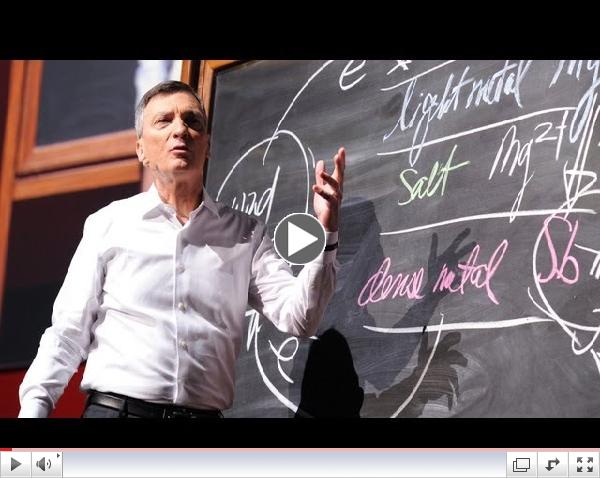 | Sadoway: Missing Link
to Renewable Energy |
|
 | |
Journal of the Black Left Unity Network
|
|

New CCDS Book Reporting on Vietnam
|
 The new annual edition of our journal of discussion and analysis is now out. More than 130 pages, it includes 20 articles on organizing, racism and the right. Cost is $10 plus shipping. Or get one by becoming a sustainer. Click the title to buy it directly. The new annual edition of our journal of discussion and analysis is now out. More than 130 pages, it includes 20 articles on organizing, racism and the right. Cost is $10 plus shipping. Or get one by becoming a sustainer. Click the title to buy it directly.
|
|
Radical Jesus:
A Graphic History of Faith 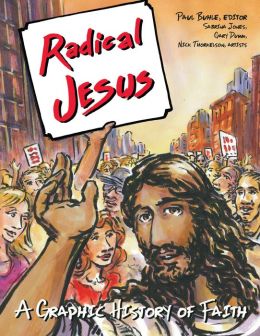 By Paul BuhleHerald Press By Paul BuhleHerald Press
|

Check out what CCDS has been doing...
|
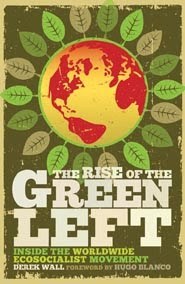 Keep On Keepin' On Keep On Keepin' OnClass and Privilege, the Green New Deal ...and other Short Posts on Tumblr by Carl Davidson
|

Edited by Carl Davidson Revolutionary Youth the the New Working Class: The Praxis Papers, the Port Authority Statement, the RYM Documents and other Lost Writings of SDS
Changemaker, 273pp, $22.50
For the full contents, click the link and view 'Preview' under the cover graphic.
|
|
By Randy Shannon, CCDS

"Everyone has the right to work, to free of employment, to just and favorable conditions of work and to protection against unemployment."
- United Nations Universal Declaration of Human Rights, December 10, 1948
I. Introduction
The "Great Recession" that began in 2007 has caused the greatest percent of job losses since the Great Depression of 1929. This crisis is the end of an era of unrestrained 'neo-liberal' capitalism that became public policy during the Reagan administration. The crisis marks a new level of instability with the growth of a global financial elite that targeted US workers and our trade unions after World War II.
|
|
Order Our
Full Employment Booklets
 |
...In a new and updated 2nd Edition
Capitalism may well collapse under its own excesses, but what would one propose to replace it? Margaret Thatcher's mantra was TINA...There Is No Alternative. David Schweickart's vision of "Economic Democracy" proposes a serious alternative. Even more fundamentally, it opens the door to thinking about alternatives. His may or may not turn out to be the definitive "successor system," but he is a leader in breaking out of the box. |
We Are Not What We Seem:
Black Nationalism and Class Struggle in the American Century
By Rod Bush, NYU Press, 1999
|
 A Memoir of the 1960s A Memoir of the 1960s
by Paul KrehbielAutumn Leaf Press, $25.64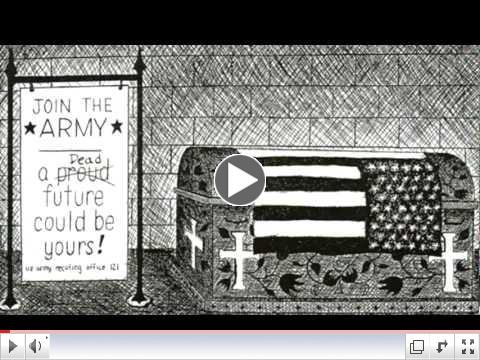 | | Shades of Justice Video: Bringing Down a President, Ending a War |
|

Essays on Mondragon, Marx, Gramsci
and the Green and Solidarity Economies |
Solidarity Economy:What It's All About

Edited by Jenna Allard, Carl Davidson and Julie Matthaei
Buy it here...
|
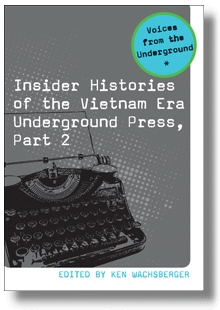
- Foreword by Susan Brownmiller
- Preface by Ken Wachsberger
$37.50 + $6 shipping
|
|
Discussion Documents for a Militant Movement
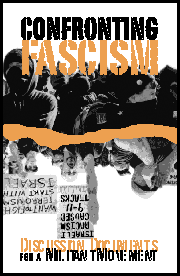
By Don Hamerquist
|
|
|
|
An Invitation to CCDSers and Friends...
 Resistance Resistance Bubbling Up
From Below!
We're the Committees of Correspondence for Democracy and Socialism...Do you have friends who should see this? Pass it on...Do you have a blog of your own? Others you love to read every day? Well, this is a place where you can share access to them with the rest of your comrades. Just pick your greatest hits for the week and send them to us at carld717@gmail.com!
Most of all, it's urgent that you oppose war on Iran, defend voter rights, plan for 2014 races now, oppose austerity, support the 'Moral Mondays' in North Carolina, the Congressional Progressive Caucus' 'Back to Work Budget'! We're doing more than ever, and have big plans. So pay your dues, make a donation and become a sustainer. Do it Now! Check the link at the bottom... |
Walmart Workers Will Make History on Friday
As America Confronts Growing Inequality

By Peter Dreier Truthout
Nov 27, 2013 - This Friday, the busiest shopping day of the year, tens of millions of Americans will travel to Walmart stores to look for holiday discounts on computers, toys and cellphones as well as to buy groceries and basic household items. But at more than 1,500 of Walmart's 4,000 stores, shoppers will be greeted by Walmart employees handing out leaflets and holding picket signs - "Walmart: Stop Bullying, Stop Firing, Start Paying" and "We're Drawing a Line at the Poverty Line: $25,000/year" - protesting the company's abusive labor practices, including poverty-level wages, stingy benefits and irregular work schedules that make it impossible for families to make ends meet.
The Black Friday rallies and demonstrations represent a dramatic escalation of the growing protest movement among employees of America's largest private employer. But they also represent the vanguard of a sharp challenge to the nation's widening economic divide and the declining standard of living among the majority of Americans.
National leaders and community groups from every corner of the country will join Walmart workers at protests leading up to and on Black Friday. Members of Congress, including Rep. Keith Ellison, a Minnesota Democrat; women's groups including the National Organization for Women; and environmental and consumer organizations such as The Sierra Club and the National Consumers League have pledged support, saying that the Walmart workers' fight is a fight for all Americans.
It is sometimes difficult to recognize historic events as they unfold, but it is likely that future generations will look at these Walmart protests as a major turning point that helped move the nation in a new direction, similar to the sit-down strikes among Flint auto workers in 1937, the Woolworth lunch counter sit-ins by civil rights activists in 1960 and the first Earth Day in 1970, which jump-started the environmental movement.
A Growing Social Movement
The swelling anger over inequality began with the Occupy Wall Street demonstrations in September 2011 and spread quickly from New York City to cities across the country. The Occupiers were soon evicted from the parks and other places they temporarily inhabited, but the movement's message has continued to resonate with the American public. Activists as well as many politicians and pundits have embraced its "1% vs. 99%" theme, which has quickly become part of the Americans' everyday conversations.
Public opinion polls reveal that a significant majority of Americans believe that there is too much power in the hands of a few rich people and corporations, that our political and economic system unfairly favors the wealthy and that wealthy people don't pay their fair share of taxes. Surveys also document that Americans think that people who work full time should not be trapped in poverty. A July poll conducted Hart Research Associates showed 80 percent of Americans support hiking the federal minimum wage to $10.10 an hour and adjusting it for the cost of living in future years. Not surprisingly, 92 percent of Democrats voice support for this proposal, but so do 80 percent of independents, 62 percent of Republicans, 75 percent of Southern whites and 79 percent of people with incomes over $100,000....(Click title for more)
|
|

One of the biggest differences between this recovery and others that came before is the contraction of government spending and employment
By Martin Hart-Landsberg
Pacific Standard
Nov 27, 2013 - The current economic recovery officially began in June 2009 and is one of the weakest in the post-World War II period. This is true by almost every indicator, except growth in profits.
One reason it has offered working people so little is the contraction of government spending and employment. This may sound strange given the steady drumbeat of articles and speeches demanding a further retrenchment of government involvement in the economy, but the fact is that this drumbeat is masking the reality of the situation.
This figure shows the growth in real spending by federal, state, and local governments in the years before and after recessions. The black line shows the average change in public spending over the six business cycles between 1948 and 1980. Each blue line shows government spending for a different recent business cycle and the red line does the same for our current cycle. As you can see, this expansionary period stands out for having the slowest growth in public spending. In fact, in contrast to other recovery periods, public spending is actually declining.

According to Josh Bivens:
...public spending following the Great Recession is the slowest on record, and as of the second quarter of 2013 stood roughly 15 percent below what it would have been had it simply matched historical averages ... if public spending since 2009 had matched typical business cycles, this spending would be roughly $550 billion higher today, and more than 5 million additional people would have jobs (and most of these would be in the private sector).
The basic stagnation in government spending has actually translated into a significant contraction in public employment. This figure highlights just how serious the trend is by comparing public sector job growth in the current recovery to the three prior recovery periods.

As Bivens and Heidi Shierholz explain:
...the public sector has shed 737,000 jobs since June 2009. However, this raw job-loss figure radically understates the drag of public-sector employment relative to how this sector has normally performed during economic recoveries.... [P]ublic-sector employment should naturally grow as the overall population grows. Between 1989 and 2007, for example, the ratio of public employment to overall population was remarkably stable at roughly 7.3 public sector workers for each 100 members of the population. Today's ratio is 6.9, and if it stood at the historic average of 7.3 instead, we would have 1.3 million more public sector jobs today.
In short, the challenge we face is not deciding between alternative ways to further shrink the public sector but rather of designing and building support for well financed public programs to restructure our economy and generate living wage jobs....(Click title for more)
|
|
A change to obscure procedural rules in the U.S. Senate and the upcoming 2014 elections could be a dangerous window of opportunity
By CJ Werleman
Alternet.org
Nov 26, 2013 - Elections have consequences. The Senate Democrats' detonation of the "nuclear option" has dramatically raised the stakes for secular progressives in 2014, because if there are two issues that juice the Christian Right the most, it's women's reproductive rights and judicial activism. On the latter, the Religious Right senses a once-in-a-decade opportunity to impose its radical worldview on America.
Last week, the Senate voted 52-48 to eliminate the ability of the minority party in the Senate to filibuster executive branch nominees and any judgeship below the Supreme Court by changing the requirements for passage to a simple majority vote. It was a historic move made because there was no other alternative, given the GOP's unprecedented abuse of the filibuster. In the history of the United States, 168 presidential nominees have been filibustered. Half occurred under all presidents from Washington through to Bush. Remarkably, the other half has taken place under just one president: Obama.
Why such aggressive judicial obstructionism by the GOP?
Washington Post columnist E.J. Dionne Jr. writes, "This era's conservatives will use any means at their disposal to win control of the courts. Their goal is to do all they can to limit Congress's ability to enact social reforms."
The Christian Right, which is the GOP's most reliable and agitated voting bloc, is obsessed with the courts, and the Court of Appeals for the D.C. circuit is the nation's second most important judicial body, which is why Republicans "gave the game away when all but a few of them opposed Obama's three most recent appointments."
Now that Democrats were forced into limiting the filibuster, the Christian Right has its incentive to mobilize for 2014. A simple majority control of the Senate gives it an opportunity to pack the courts with judges straight out of the Justice Scalia mold, who once said that separation of church and state would come under scrutiny under a Supreme Court with a Scalia majority. If the Christian Right sweeps Republicans to control the Senate in next year's midterms, the anti-secularists will take a big step forward toward their stated ideological goals.
The recent Values Voter Summit demonstrated that the likely 2016 GOP frontrunners have a base wish to transform America's secular state into a tyrannical theocracy - a nirvana absent gays, liberals, immigrants, Muslims and science books. The right-wing media elites are already doing their bit to gin up the far right's judicial activists with Rush Limbaugh comparing filibuster reform to rape. ...(Click title for more)
|

By Davey D
Huffington Post
Nov 26, 2013 - So today for the umpteenth time we saw another news story, designed to cause mass hysteria with solemn sounding anchors telling us to be on "high alert" for roving gangs of black youth participating in this nationwide trend called "The Knockout Game."
As anchors launch into their tales of terror showing us the same grainy stock footage which includes a teacher being knocked out in New Jersey from two years ago and a woman being knocked out in London, a ticker tape runs across the bottom of our screens telling us police are on the look out for these "young thugs" and have ordered extra patrols...
The story, depending on what city you see it reported, will then tell you about two bike riders in St. Louis being knocked out or black kids in Brooklyn looking for Jews to knock out. There's a report of some kid knocking a woman out in San Diego. All the reports show the same video footage of some young teens in Jersey bragging about how they knock folks out. By then our blood is either boiling or we are scared to death.
The anchors' voices then get shrill as they pull out a map detailing what parts of the country the attacks have happened. In the past month there have been seven knockouts and according to the anchors the videos are being posted all over YouTube by the hundreds.
All the news stories then launch into a field reporter interviewing someone who knows of a friend who knows a friend who got knocked out and went to the hospital because of the Knockout Game.
These news stories from coast to coast end with the reporters telling us two people have been killed by what police think MAY have been a version of the Knockout Game. We are left concluding that we no longer need to fear terrorists organizations like al Qaeda, but instead be wary of marauding black youth. The message is when you see them, run. Why? Because they are gonna knock you out.
These reports have understandably led to some harsh reactions, with many publishing blogs and posting YouTube vlogs promising to shoot if someone dares to try to knock them out. In fact if you go online, you are likely to find scores more threatening responses to the Knockout Game than you are the same three or four videos, all from years past, repeatedly being shown on news stations around the country reporting this new disturbing trend.
It's important that folks not get caught up in the hype of the Knockout Game without putting it in historical, social and political context. First let's be clear in understanding what this is: the Knockout Game is ASSAULT. And when a group of people are "targeting people at random" to assault them, that is basically another form of BULLYING.
Are assaults and bullying acceptable? Absolutely not. Should we be concerned? Of course. But let's be honest when reporting on this type of anti-social behavior. Yes, there are crimes that occur. Yes, there are innocent folks who get attacked, robbed, etc. But this is not what's being reported. Many in the media are making it appear as if this is some sort of game spreading like wild fire from coast to coast. It's simply not true. The fact that they are taking any crime and calling it part of Knockout Game trend is akin to when the police label every crime in certain communities "gang related."...(Click title for more)
|
 Striking ASM workers inside the factory compound. Photograph from Sina Weibo Striking ASM workers inside the factory compound. Photograph from Sina Weibo
China Labor Bulletin
Nov 26, 2013 - A 22-day strike by nearly 5,000 workers at a Shenzhen factory run by Dutch semiconductor giant ASM ended last week with an agreement to increase wages and subsidies by 20 percent. The company also agreed to hold regular talks with the workers on how to improve the company's rules and regulations.
The strike broke out on 31 October when ASM Materials China Limited announced, without the trade union's consent, that it would move part of the factory to a location outside Shenzhen. Thousands of workers walked off the job, held up banners and started to march through the factory, demanding a pay increase of 3,000 yuan per month as well as compensation for relocation.
Workers complained that pay at the factory had remained stagnant for many years. One worker representative, Mr. Gong, told Phoenix TV during the protest that the company would always claw back any gains made by employees when the minimum wage in Shenzhen was increased. For example, he said: "We used to have a 1,000 yuan basic salary plus 500 yuan in subsidies, but after the minimum wage was raised to 1,200 yuan, the company raised the basic salary accordingly, but slashed the subsidy by 200 yuan."
The media coverage of the dispute generated solidarity across the border in Hong Kong. Members of the Hong Kong Confederation of Trade Unions protested at ASM's Hong Kong headquarters on 6 November and demanded the company address the workers' grievances. Workers also shared their experiences on Chinese social media and discussed strategies using online messaging platforms. A Shenzhen-based labour rights group also provided organizational advice and support to the striking workers.
On 20 November, ASM finally agreed to increase both the basic salary and subsidies by 20 percent for those employees who agreed to relocate with the company and give out a severance package, according to the law, to those who preferred not to relocate. It also promised to provide an additional housing allowance of 200 yuan or free accommodation at the factory, as well as to open better communication channels between workers and management.
Although the deal fell short of the workers' initial expectations, many saw it as a small victory. "The strike and protest not only got us a pay raise of 20 percent, more importantly, it also showed the workers how to defend their rights," one worker wrote on a labour activist's blog.
Moreover, the worker's solidarity continues after the strike as they plan to donate money to seven workers' representatives who were illegally sacked after most employees signed the settlement agreement and went back to work.
|
|
By Harry Targ
Diary of a Heartland Radical
Fifty years ago President John F. Kennedy was assassinated by Lee Harvey Oswald and possibly a web of mysterious associates. The "Who Killed Kennedy?" debate has continued and remains alive these many years since the tragedy in Dallas.
Less frequent but important discussion recently has arisen about the effectiveness of the Kennedy Administration on domestic and foreign policy. I wish to address these issues in three parts.
First, candidate Kennedy inspired a massive sense of enthusiasm from younger Americans, many first-time voters. His youth, his vigor, his articulateness, and his call for public service resonated with a generation of youth who were beginning to follow the growing struggles for racial justice in the South. In addition young people who began to pay attention to politics in the late 1950s were increasingly frustrated by the Cold War and the cloud of possible annihilation resulting from the spread of nuclear weapons. In this political climate the young presidential candidate appealed to the best instincts of many American youth. Ironically, the Kennedy mystique inspired a generation of activists whose struggles against racism and the Vietnam War would have appalled the President if he had lived.
Second, as to civil rights, the Kennedy Administration, much like the Eisenhower Administration that preceded it, was a reluctant supporter of the courageous activism, of young people in the South. The activists, Black-led and white supported-- primarily of the Student Non-Violent Coordinating Committee, the Congress of Racial Equality, and the Southern Christian Leadership Conference-- courageously fought against racial injustice with little support from the federal government: including Robert Kennedy's Justice Department , and the Federal Bureau of Investigation, led by the notorious anti-Communist zealot J. Edgar Hoover. The Kennedy Administration would have preferred if the historically significant 1963 March on Washington had not occurred. Key representatives of the administration sought to moderate march organizers' militant demands for racial equality and economic justice.
Third, as to foreign policy, Kennedy surrounded himself with vigorous, articulate, ideologically rigid anti-Communists. While he and the Soviet leader Nikita Khrushchev deescalated tensions after the onset of the Cuban Missile Crisis, it is clear that the President was willing to go to war, destroying both countries in the process, if he did not achieve a symbolic victory, the withdrawal of Soviet missiles from Cuba soil (even though the Secretary of Defense and others had advised him that the weapons on the island did not change the balance of power between the two military giants). In the end, while the Soviet installation of missiles in Cuba was foolish, it was Khrushchev's decision to withdraw the missiles that saved the world from destruction.
On Vietnam, JFK added 16,000 military "advisers" to South Vietnam during his three year term. He launched the "Strategic Hamlet Program," which moved thousands of Vietnamese villagers to South Vietnamese government "secure" areas. He launched the program to train Special Forces or Green Berets to fight counterinsurgent wars. He provided military advisers and resources to dictatorships elsewhere including small countries in Latin America. The Kennedy programs were part of a plan to "modernize" what was then called the "Third World" or the "developing countries." His key aides in this global effort were military advisers such as retired General Maxwell Taylor, defense intellectuals such as Robert McNamara, McGeorge Bundy, and William Bundy, and academic advisors such as Walter Rostow. Kennedy's Secretary of State, Dean Rusk, was a long-time diplomat who vigorously opposed what he regarded as the Communist strategy of "wars of national liberation." For him Vietnam was a test case of United States resolve in the war against Communism.
In short, despite limited evidence from some of Kennedy's closest supporters, the President for three years promoted a global agenda to push back what he and they regarded as International Communism, arguing that if given a choice, peasant villagers in Vietnam would choose the South Vietnamese government over the government of the North and former guerrilla fighters in the South who fought French colonial rule. JFK's global vision, like his predecessors and successors, was to promote a global United States agenda that, contrary to predictions, increased violent opposition in the world. There is no compelling evidence that President Kennedy would have reversed the course of United States foreign policy by ending U.S. involvement in Vietnam if he had lived.
Ironically, the nearly forgotten successor to Kennedy was Vice-President Lyndon Baines Johnson. He proceeded to mobilize a recalcitrant Congress to pass major civil rights legislation, Medicare, and programs under the rubric of the War on Poverty, which for a time reduced poverty in America to the lowest levels in the twentieth century. He supported policies which established effective pre-school programs and empowered some heretofore marginalized peoples in urban communities to be politically engaged. Tragically, these programs lost their popularity and funding as the Vietnam War escalated.
In sum, candidate and President John F. Kennedy was a political inspiration for many of the sixties generation but as president did not live up to what he promised either in terms of civil rights or foreign policy. ...(Click title for more)
|
Book Review: Kramer's 'Republic of Rock'
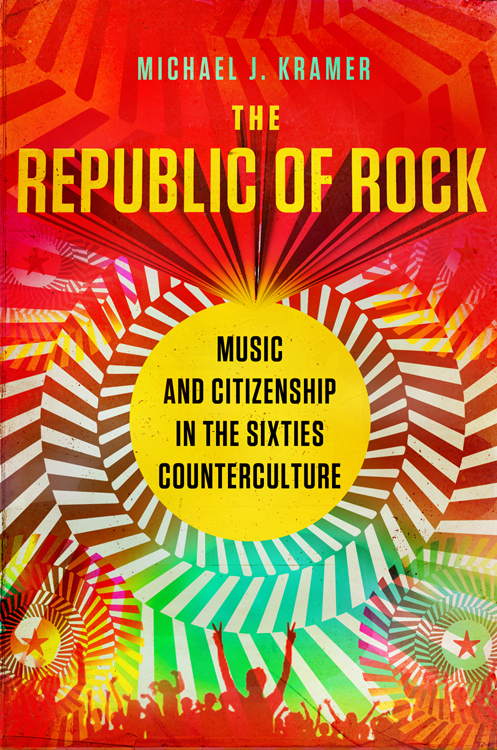 Music and Citizenship Music and Citizenship
in the Sixties Counterculture By Ron Jacobs
Counterpunch
It's always interesting to see a history of a time and place in which one was at least a passive participant examined through academic perspective years later, especially by someone without any temporal connection. Sometimes the effort succeeds and sometimes it doesn't. Michael Kramer's study of the sixties counterculture in SF and among members of the US military in Vietnam is such an exercise. For the most part Kramer's book, titled Republic of Rock: Music and Citizenship in the Sixties Counterculture, does what the author intended it to do. Kramer centers his discussion on the genesis and growth of the hippie counterculture in San Francisco in the mid-to-late 1960s and the adaptation of that culture's music and stylings by US military members and other Americans in Vietnam during the same period.
LSD, marijuana and other drugs obviously played an important role in both parts of the world. Indeed, it can be reasonably argued that the phenomenon known as the hippies would not have occurred except for the presence and liberal use of marijuana and LSD. The music created by bands like the Grateful Dead and Jefferson Airplane (two of the groups most associated with the San Francisco hippie culture) comes from the mental and emotional perceptions created by the psychedelic experience. The fact that LSD was legal until October 6, 1966 and that it was easily available to virtually anyone interested before and after that date played a role in the composition of the music and its reception by an LSD and marijuana fueled audience. Furthermore, the use of LSD during performances by many of the individuals involved created a new dynamic in terms of performer-audience relationship.
It is this new dynamic that Kramer emphasizes in his discussion of citizenship. By breaking down the barrier between audience and performer, the notion of passive participation by the audience was challenged and even destroyed. The series of performances organized by author Ken Kesey and his Merry Pranksters known as the Acid Tests insisted that those attending who weren't onstage also participate. Some wore costumes, some juggled, and some just acted weird. Almost everyone took part in a manner that involved more than buying a ticket and sitting in a seat. Furthermore, the band was often as high as the audience, thereby occasionally rendering their performance as uneven as the LSD experience itself can be. Participation wasn't just encouraged, it was expected, and it was to be undertaken on one's own terms. This is what citizenship meant in the counterculture.
It is Kramer's contention that when this concept of participation moved into the greater public the commonly held ideas of citizenship were challenged and even threatened. The passivity of the previous generation and its willingness to accept and support authority was undone by the counterculture's challenge and opposition to business as usual. Even previous methods of protest were undone. To illustrate the latter, Kramer describes and discusses the appearance of Ken Kesey and the Pranksters at a Berkeley rally against the US war in Vietnam. This incident, made famous in Tom Wolfe's The Electric KoolAid Acid Test, involved the Pranksters driving up in their bus, singing some songs and then Kesey telling the crowd to turn their backs on the war and conventional protest. Naturally, this advice upset a number of conventional leftists. Kramer contends (and I think he is absolutely correct) that Kesey was actually saying that the only way the war was going to end was if and when everyone refused to take part in any aspect of its production. In Kesey's mind, conventional protest was merely playing the game that allowed imperial war to go on.
In Vietnam, US soldiers understood Kesey's advice all too well. Dropping out of the war and the system that required war to maintain itself was more than a political statement. It could be a matter of life and death. The adaptation of the counterculture ethos to the military conditions in Vietnam provided many GIs with a means to not only ignore the war, but also to participate in some way in a culture identified with the opposition to that war. Although GI opposition did occasionally involve refusing to fight and even attacking the command structure, the more common approach was to pretend to participate. Oftentimes, men would go out on missions only to sit them out in the jungle smoking weed and listening to rock music....(Click title for more)
|
 Nebraska Nebraska
Bruce Dern,
Will Forte
Directed by
Alexander Payne
By Peter Travers
Rolling Stone
Nov 15, 2013 - Have you ever thought of Nebraska as Oz? Woody Grant, played by an understated, unforgettable Bruce Dern, sure as hell has. Old Woody got one of those magazine scams in the mail claiming he's bagged a million bucks. "It says I won," growls Woody, with an unshakable faith in what he sees in print. All he needs to do is leave his home in Billings, Montana, and head off to the prize office in Lincoln, Nebraska.
From that outline, director Alexander Payne and first-time screenwriter Bob Nelson sculpt a story of the American character on the lost frontiers of trust and shame. Nebraska aims to investigate how those qualities went missing. And not just in the Midwest. Of the Omaha-born Payne's six films, four (Citizen Ruth, Election, About Schmidt, Nebraska) were shot in his home state. But two that weren't, Sideways and The Descendants, also use small details to reach a larger truth.
Is Nebraska a comedy or a drama? Like life, it's both. Payne takes his time. Deal with it. This is a movie to bring home and live with, to kick around in your head after it hits you in the heart. It's damn near perfect, starting with the acting. Dern, 77, has specialized in instability and menace. He killed John Wayne in The Cowboys, stuck it to Robert Redford in The Great Gatsby, terrorized the Super Bowl in Black Sunday and got an Oscar nomination for playing a traumatized Vietnam vet in Coming Home. But Dern's laser focus is nowhere to be seen in Nebraska. Woody's eyes are blurred from drinking, his spirit sapped by broken dreams. His wife, Kate (the priceless June Squibb), calls him a damn fool for chasing a bogus jackpot. Squibb should have an Oscar in her reach; she's that bruisingly funny and true. But sorrow seeps in. Woody's TV newsman son, Ross (Breaking Bad's Bob Odenkirk), wants to put the old man in a home. It's son David (Will Forte), a stereo salesman, who joins daddy Don Quixote on his quest for a slice of dignity and maybe a new truck.
And so begins Woody's road odyssey, shot by the gifted Phedon Papamichael in glorious widescreen black and white and scored by Mark Orton with a fiddler's ear for the sharp and the tender. Along the way, Woody meets up with greedy relatives (Tim Driscoll and Devin Ratray), the girl that got away (Angela McEwan) and an old enemy (Stacy Keach). But mostly, father and son learn about each other. Forte, of SNL and MacGruber, is revelatory, nailing every nuance in a complex role. And just try to take your eyes off Dern. In his finest two hours onscreen, he gives a performance worth cheering. There's not an ounce of bullshit in it. Same goes for the movie.
|
|
Become a CCDS member today!
 The
time is long past for 'Lone Rangers'. Being a socialist by your self is
no fun and doesn't help much. Join CCDS today--$36 regular, $48
household and $18 youth. The
time is long past for 'Lone Rangers'. Being a socialist by your self is
no fun and doesn't help much. Join CCDS today--$36 regular, $48
household and $18 youth.
Better yet, beome a sustainer at $20 per month,
and we'll send you a copy of Jack O'Dell's new book, 'Climbing Jacobs
Ladder,' drawing on the lessons of the movement in the South in the
1950s and 1960s.
Solidarity, Carl Davidson, CCDS |
|
|